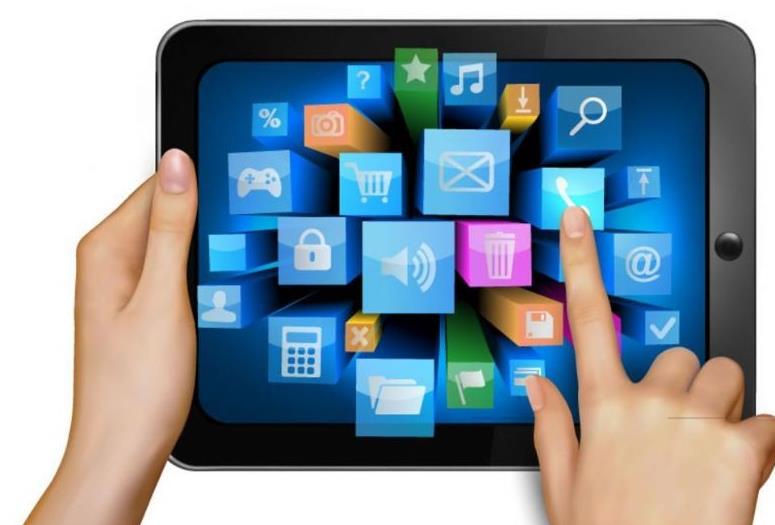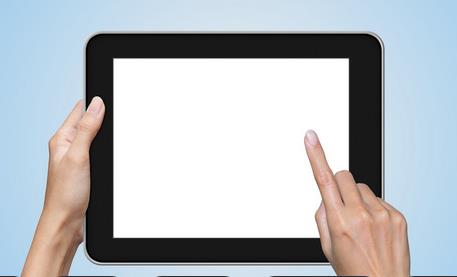The difference between capacitive screen and touch screen
The difference between capacitive screen and touch screen
Capacitive screens and touch screens are widely used in our daily lives, bringing great convenience to our work, life, and entertainment. However, to this day, many people are unaware of the difference between the two. So let me distinguish the difference between capacitive screens and touch screens for you.
1、 What is a touch screen?
A touch screen, commonly known as a touch screen or touch panel, is an inductive liquid crystal display device that can receive input signals such as contacts. It allows users to control the device by clicking, sliding, and other operations on the screen through input devices such as fingers or touch pens. Touchscreen technology has been under research since 1960 and has continuously advanced with the development of electronic technology. It is now widely used in various fields such as mobile phones, tablets, retail, public information inquiry, multimedia information systems, etc.
What is a capacitive screen?
Capacitive screen is a type of touch screen technology that operates based on the principle of capacitance. The surface of the capacitive screen is covered with a layer of conductive material. When a finger or other conductive object contacts the screen, it changes the electric field distribution on the screen surface, which is detected by the sensor and determines the touch position. Capacitive screens have the characteristics of high sensitivity, fast response, and multi touch, and are currently the most commonly used touch screen technology in mobile devices such as smartphones and tablets.
2、 Working principle
The working principle of touch screen
The working principle of touch screens varies depending on the type of technology, but generally involves the collaboration of touch detection components and touch screen controllers. When the user touches the screen, the touch detection component captures the touch signal and converts it into an electrical signal or other form of signal. These signals are then received and processed by the touch screen controller to determine the location and nature of the touch (such as clicking, sliding, etc.). Then, the touch screen controller sends the processed information to the device’s processor or other related components to achieve the corresponding operation.
The working principle of capacitive screen:
The working principle of a capacitive screen is based on the capacitance effect. On a capacitive screen, there are usually two transparent conductive layers (such as ITO glass) covered, which are separated by an insulating layer to form a capacitive structure. When the user touches the screen, a capacitance is formed between the finger and the conductive layer. Due to the high conductivity of the human body, charges will flow from the sensing electrodes on the screen to the fingers, causing a change in capacitance value. The detection circuit will measure the change in capacitance and determine the touch position based on the change in capacitance value. By scanning the entire sensor array, multi touch can be accurately detected.
3、Characteristics
Features of touch screen
Strong interactivity: Users can operate directly on the screen with their fingers or stylus, without the need for external input devices such as keyboards or mice.
Easy to operate: The touch screen interface is intuitive and easy to understand, and users only need to touch the screen to complete the operation.
Strong adaptability: Touchscreens can be applied to screens of various sizes and shapes to meet the needs of different devices.
Characteristics of capacitive screen:
High sensitivity: The capacitive screen can accurately sense finger touch movements, even very slight touches can be detected.
Quick response: The response speed of capacitive screens is very fast, almost achieving instant response.
Multi touch: The capacitive screen supports multi touch functionality, allowing users to use multiple fingers simultaneously to operate on the screen.
Good durability: The surface of capacitive screens is usually made of hard glass material, which has high wear resistance and scratch resistance.
4、 Application scenarios
Application scenarios of touch screen:
Touch screen technology is widely used in various electronic devices, including but not limited to:
Mobile devices: such as smartphones, tablets, etc.
Retail terminals: such as POS machines, self-service vending machines, etc.
Public information query system: such as information query screens at airports and train stations.
Multimedia information system: such as the guide system of exhibition halls, the display system of museums, etc.
Application scenarios of capacitive screens:
Due to its high sensitivity, fast response, and multi touch characteristics, capacitive screens are particularly suitable for scenarios that require frequent touch operations and complex gesture operations. Therefore, capacitive screens have been widely used in mobile devices such as smartphones and tablets. In addition, with the development of technology and the reduction of costs, capacitive screens are gradually being applied in some high-end home appliances and industrial control equipment.

5、 Difference
Touch screen is a broad concept that includes various types of technologies, such as resistive touch screen, capacitive touch screen, infrared touch screen, etc. And capacitive screen is a specific type of touch screen technology.
working principle:
The working principle of touch screens varies depending on the type of technology, but generally involves the collaboration of touch detection components and touch screen controllers. The capacitive screen works based on the principle of capacitance, and determines the touch position by detecting changes in the electric field on the screen surface.
Features and performance:
Compared to other types of touch screens such as resistive screens, capacitive screens have significant advantages in sensitivity, response speed, and multi touch. It can provide a smoother and more natural touch experience, and support more complex gesture operations. However, the cost of capacitive screens is relatively high and may be affected in certain specific environments, such as humid environments.
Application scenarios:
Due to its excellent performance and user experience, capacitive screens are particularly suitable for mobile devices such as smartphones and tablets, as well as scenarios that require high-sensitivity touch operations. Other types of touch screens may be more suitable for scenarios with specific requirements for cost or environmental adaptability.
There are significant differences between capacitive screens and touch screens in terms of definition, working principles, characteristics, and application scenarios, but they are also closely related. The following is a more in-depth analysis of these two concepts, as well as their application examples in different fields.
6、 More in-depth analysis
6.1 Technological Evolution and Trends
The evolution of touch screen technology: Touch screen technology has gradually developed from the initial resistive and infrared types to various types such as capacitive and surface acoustic wave types. Each technology has its unique advantages and limitations, but with the continuous advancement of materials science, electronic technology, and software algorithms, the performance and user experience of touch screens have been significantly improved. Especially with the rapid development of capacitive screen technology, the application of touch screens in mobile devices, smart homes, car navigation and other fields is becoming increasingly widespread.
Trend of capacitive screen technology: In the future, capacitive screen technology will continue to develop towards higher sensitivity, lower power consumption, larger size, and stronger environmental adaptability. With the maturity of flexible display technology, bendable and foldable capacitive screens will become possible, bringing new forms and experiences to mobile devices. In addition, with the integration of artificial intelligence and IoT technology, capacitive screens will not only be an input device, but also a key node connecting smart devices and ecosystems.
6.2 User Experience and Interaction Design
User experience: The emergence of touch screens and capacitive screens has greatly improved the user experience of electronic devices. They enable users to interact with devices intuitively, reducing the constraints and limitations of traditional input devices. Especially the multi touch and gesture recognition functions of capacitive screens provide users with a more natural and smooth interactive experience. However, a good user experience depends not only on the technical performance of the touch screen or capacitive screen itself, but also closely related to factors such as the overall design, interface layout, and interaction logic of the device.
Interaction design: In the interaction design of touch screens and capacitive screens, it is necessary to consider factors such as users’ cognitive habits, operational habits, and usage scenarios. Designers need to arrange the position and size of interface elements reasonably to ensure that users can easily perform touch operations; At the same time, it is necessary to design a reasonable feedback mechanism so that users can clearly perceive the results and status of the operation. In addition, with the continuous development of technologies such as voice assistants and facial recognition, future interaction design will pay more attention to the integration and collaboration of multimodal interactions.

7、 Application examples
7.1 Smartphones and tablets
Smartphones and tablets are one of the most widely used fields for capacitive screen applications. These devices typically use capacitive touch screens as the main input method, supporting multi touch and gesture recognition functions. Users can browse web pages, watch videos, play games, etc. by sliding, clicking, zooming, and other operations on the screen with their fingers. The high sensitivity and fast response characteristics of capacitive screens make these operations very smooth and natural.
7.2 Smart Home
In the field of smart homes, touch screens and capacitive screens are also widely used in various smart devices. For example, smart refrigerators, smart air conditioners, and other household appliances are usually equipped with touch screen control panels, allowing users to set temperature, select modes, and more through the touch screen. Some high-end smart home systems may use larger capacitive screens as control centers, achieving more convenient interactive experiences through technologies such as gesture recognition and voice assistants.
7.3 Car Navigation and Entertainment System
In car navigation and entertainment systems, touch screens and capacitive screens also play important roles. Drivers and passengers can input destinations, select music, adjust volume, etc. through the touch screen. The multi touch function of capacitive screens makes these operations more convenient and intuitive. Meanwhile, some advanced car navigation systems also support gesture recognition function, allowing users to control the navigation interface and playlists through simple gesture actions.
8、 Summary and Prospect
As one of the indispensable input methods in modern electronic devices, touch screens and capacitive screens have been widely used in various fields. They not only enhance the user experience and interaction efficiency of devices, but also drive the continuous development and innovation of related technologies. In the future, with the continuous advancement of materials science, electronic technology, and software algorithms, as well as the continuous integration of artificial intelligence and Internet of Things technology, the performance and application scenarios of touch screens and capacitive screens will be further expanded and improved. We have reason to believe that in the near future, they will bring us more convenient, intelligent, and rich interactive experiences.


